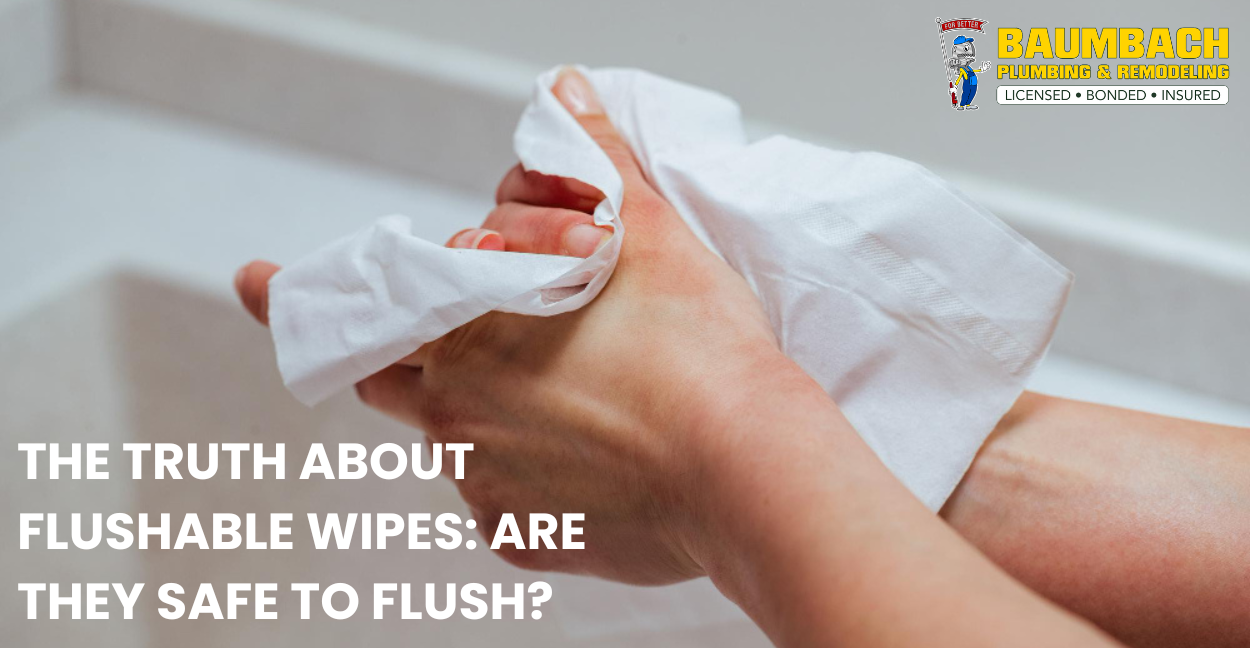Have you ever thought about why toilets sometimes have problems and get clogged? It happens a lot, and it can be confusing. But don’t worry! In this blog, we’re going to talk about why toilets get blocked in simple words. We’ll explore the details of this issue like detectives. So, let’s take a journey into the world of plumbing and figure out why our toilets sometimes misbehave.
It’s like when your toilet is not working the way it should, and we want to find out why. Imagine we’re like investigators solving a mystery, but instead of solving a crime, we’re figuring out why toilets get clogged. So, let’s get started and uncover the secrets of clogged toilets in a way that’s easy to understand.
Understanding the Basics
Toilets are engineered to manage specific types of waste—primarily human waste and toilet paper. When we flush, water whisks everything away through pipes, ultimately leading to the sewer system. However, not everything is meant to go down the drain, and that’s where problems can arise.
How Does a Toilet Get Clogged?
1.) Too Much Toilet Paper
One frequent culprit for clogged toilets is the excessive use of toilet paper. While toilet paper is designed to break down in water, using an excess amount at once can overwhelm the plumbing system. It’s akin to trying to drink a massive glass of water in one go—challenging! Similarly, flushing an excessive amount of toilet paper can create a blockage in the pipes.
2.) Flushing Non-Flushable Items
Toilets aren’t trash cans, and flushing non-flushable items can lead to clogs. Items like facial tissues, wet wipes, sanitary products, and even cotton balls don’t break down easily in water. They can accumulate in the pipes, forming a barrier that disrupts the normal flow of water.
3.) Foreign Objects
Accidents happen, and sometimes, items like toys, combs, or small articles of clothing find their way into the toilet. These foreign objects can obstruct the pipes and cause a blockage.
4.) The buildup of Hard Water Deposits
Over time, minerals in hard water can accumulate in the pipes, creating deposits that reduce the pipe diameter. This narrowing makes it easier for toilet paper and other debris to get stuck, leading to clogs.
5.) Tree Roots
Believe it or not, tree roots can infiltrate underground pipes, seeking water and nutrients. If there are cracks or gaps in the pipes leading from your home, tree roots can grow into them, causing blockages.
6.) Low-Flow Toilets
While designed to be environmentally friendly, low-flow toilets may not provide enough force to move waste effectively. This can lead to incomplete flushing and subsequent clogs.
Now, let’s dive into the ultimate guide to keeping your toilet happy and clog-free.
The Ultimate Guide to Keeping Your Toilet Happy and Clog-Free
We’ll delve into super-easy tips to ensure your toilet remains content and free from those pesky clogs. From understanding flushing dynamics to establishing simple yet effective cleaning routines, let’s unlock the secrets to maintaining a trouble-free toilet.
Be Super Careful with What You Flush
Your toilet, much like a superhero, has its strengths and limitations. While it bravely handles toilet paper and human waste, it struggles with tissues and other foreign items. The key here is to avoid overwhelming it with non-dissolvable materials, which can lead to blockages requiring the use of a plunger.
Wait Until You’re Done to Flush
Patience is a virtue, even for toilets. Allow your toilet to complete its job effectively by flushing only after you’ve finished your business. This simple timing strategy prevents the plumbing system from becoming overwhelmed, reducing the risk of clogs.
Choose Toilet Paper Wisely
Not all toilet papers are created equal. Opt for brands specifically designed to break down easily, as opposed to those luxurious, extra-thick options. While the latter might provide a soft touch, they can contribute to clogs over time, causing inconvenience and potential plumbing issues.
Show Your Toilet Some Love Regularly
Regular maintenance is the secret to a long and happy toilet life. Take a moment to clean the rim jets regularly, ensuring a smooth and efficient flush. A straightforward mixture of vinegar and baking soda can serve as a DIY cleaning solution, keeping the pipes clear of any debris.
Know Your Low-Flow Toilet’s Limits
Embracing environmental consciousness often involves the use of low-flow toilets. However, it’s crucial to understand their limitations. For larger jobs, consider flushing twice. This not only helps in water conservation but also prevents clogs that can arise from inadequate flushing power.
Get a Drain Screen Sidekick
The unsung hero in the battle against clogs is the drain screen. Placing one in your toilet bowl acts as a sidekick, catching hair and other debris before they make their way into the pipes. This simple addition contributes significantly to preventing blockages and maintaining optimal toilet performance.
Teach the Kiddos Toilet Manners
If your household includes little ones, imparting proper toilet etiquette is essential. Encourage them to use an appropriate amount of toilet paper and, most importantly, to avoid flushing toys or excessive amounts of paper at once. These small lessons contribute to a smoothly running bathroom.
DIY Solutions for Minor Toilet Clogs
Equip you with simple, do-it-yourself solutions. No need to call in the professionals just yet – let’s get hands-on and tackle those pesky clogs head-on!
Understanding Minor Toilet Clogs
Before we jump into solutions, let’s understand what we’re dealing with. Minor toilet clogs are usually caused by a buildup of toilet paper, hair, or small objects that didn’t quite make their grand exit during the last flush. These clogs are often closer to the surface and can be resolved with a bit of DIY magic.
The Trusty Plunger
Every DIY warrior needs a trusty plunger in their arsenal. Place the plunger over the drain opening, ensuring a good seal, and give it a few firm pumps. This action creates pressure and suction, helping to dislodge the clog. Remember to plunge in a controlled manner to avoid splashing!
Hot Water and Dish Soap
For a gentler approach, grab a bucket of hot water (not boiling) and add a generous squirt of dish soap. Pour this concoction into the toilet bowl from a height. The hot water and soap work together to break down the clog, making it easier to flush away.
The Mighty Toilet Auger
Don’t be intimidated by the name – a toilet auger is a simple and effective tool. Insert the auger into the drain and turn the handle. The rotating head helps grab and pull out the clog. Remember to follow the manufacturer’s instructions for your specific auger.
Baking Soda and Vinegar Combo
Create a fizzy solution by combining baking soda and vinegar. Pour the mixture into the toilet bowl and let it sit for about 10-15 minutes. The chemical reaction can help break down the clog. Follow up with a few flushes to clear the way.
DIY Drain Snake
If you don’t have a toilet auger, fashion a DIY version using a wire coat hanger. Straighten the hanger and use it to gently probe and dislodge the clog. Be cautious to avoid scratching the porcelain.
Final Flush
Now that you’ve tried these DIY solutions, give your toilet a final flush to ensure the clog is completely gone. If the problem persists, it might be time to call in the pros. Contact Baumbach Plumbing & Remodeling: Best Plumbing & Remodeling Services in Northern Virginia
Importance of Regular Toilet Maintenance
Understanding the Role of Regular Maintenance
Imagine your toilet as a well-oiled machine. Just like any other appliance, it requires attention to ensure optimal performance and a longer lifespan. Regular maintenance isn’t just about fixing problems when they arise; it’s about preventing them from happening in the first place.
1.) Fighting Off Clogs
Regular maintenance involves keeping an eye on potential clog culprits. A quick check for any visible signs of blockages, like excessive toilet paper or foreign objects, can save you from the headache of a sudden backup.
2.) Preserving Flushing Power
Over time, mineral deposits and sediment can build up in your toilet’s flushing system. Regular cleaning of the rim jets and flush holes ensures a smooth flow of water, preserving the flushing power and preventing weak or incomplete flushes.
3.) Detecting and Fixing Leaks
A silent water leak in your toilet can lead to not-so-silent water bills. Regularly check for leaks by adding a few drops of food coloring to the tank. If color seeps into the bowl without flushing, it’s time for a fix to prevent water wastage.
4.) Caring for the Tank Components
Lift the lid and peek inside the tank. Check for any signs of wear or damage to components like the flapper, fill valve, and flush handle. Replacing worn-out parts before they fail can prevent unexpected breakdowns.
5.) Addressing Slow-Filling Issues
A toilet that takes forever to fill after flushing can be a sign of a faulty fill valve or sediment buildup. Regularly clean or replace the fill valve to maintain efficient water refilling and prevent water-related issues.
6.) Keeping Things Pretty
Beyond functionality, regular cleaning helps maintain the aesthetic appeal of your toilet. A clean bowl and exterior not only look better but also contribute to a more hygienic bathroom environment.
7.) Extending the Lifespan
Just like a car needs regular oil changes, your toilet benefits from consistent attention. Regular maintenance, including preventive measures and prompt repairs, can significantly extend the lifespan of your toilet, saving you money on replacements.
By dedicating a little time to your toilet’s care, you’re not just preventing problems – you’re ensuring a reliable, efficient, and long-lasting bathroom companion.
Need Further Assistance for Toilet Repair & Replacement? Contact Baumbach Plumbing & Remodeling
At Baumbach Plumbing & Remodeling, our professional and experienced technicians can solve any toilet-related issues you might have. Whether you are dealing with a clogged or running toilet, our toilet replacement and repair service is exactly what you need. We can conduct a variety of repairs, including fixing flush valves, flanges, and flappers, replacing gaskets, and solving leaky toilet problems.
As soon as you experience any problems, make sure to contact us at Baumbach Plumbing & Remodeling by phone at (703) 250-4200 or schedule a service online. We will send someone out to conduct toilet replacement or repair and you will be back in business in no time.






